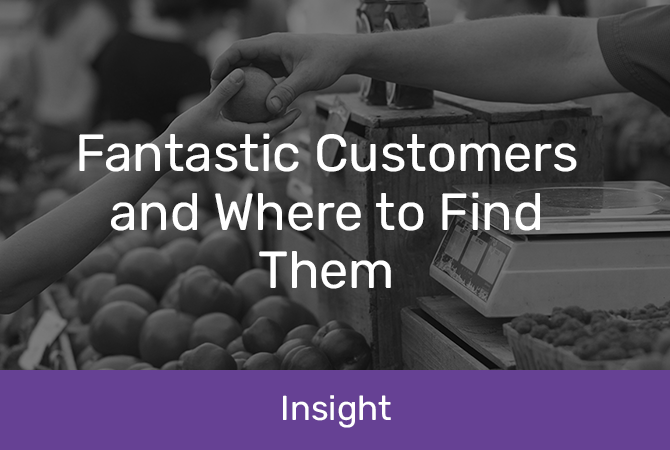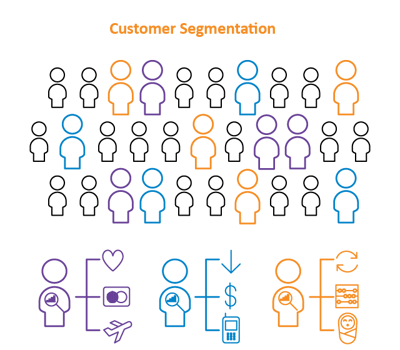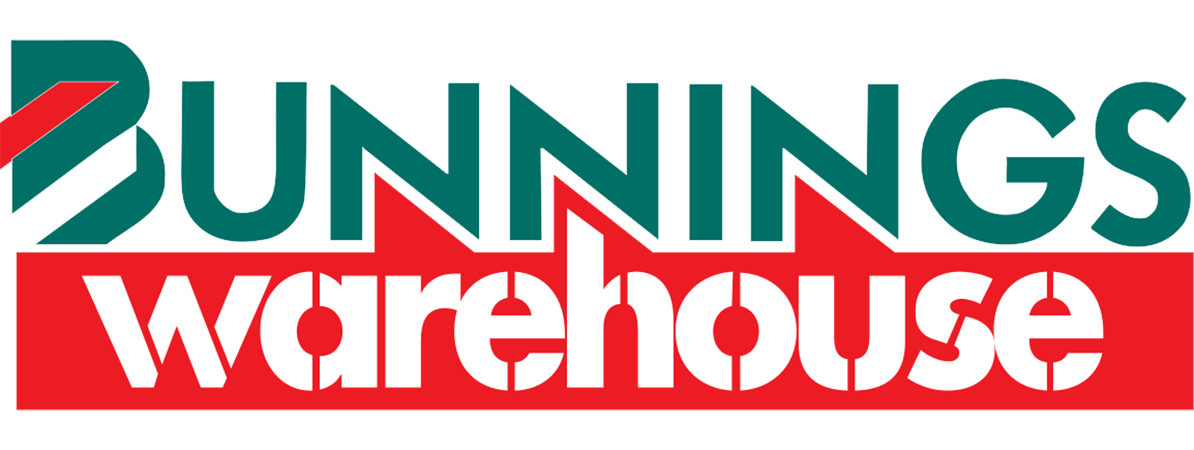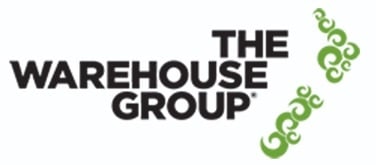
Fantastic Customers and Where to Find Them
hint- in your data
Every marketer wants lots of high value customers. They are more profitable and can be relied on to repeat purchase. Finding a new bunch of best customers starts with knowing what your existing best customers key datapoints are.
The desire for deeper customer insight and the identification of high value customers are two of the most common challenges the team at Datamine solves. We’ve found that one of the best ways to locate and market to the highest value customers in your database is by first doing a customer segmentation.
 segmentation drives deep customer insight
segmentation drives deep customer insight
A customer segmentation is an analysis and subsequent grouping of a customer base in order to create pockets of similar customers that can be treated in a similar way. There are 3 types of segmentation (strategic, marketing and operational) built from customer data.
Here are some examples of things you can do after you’ve got customer segments:
- Plan strategic initiatives based on customer dynamics
- Identify key differentiators that drive customer behaviour
- Targeting communications based on actual behaviours
- Helping know where to best allocate marketing budget
- Identifying upselling, cross-selling and retention opportunities
- Identify gaps in current product offerings or skews in customer base
- Provide a common language for talking about customers and a rounded picture of each segment
Segmentations provide a framework and benchmark for monitoring the effectiveness of marketing strategies - the customer insights from within your data can be used across marketing, product and operations.
 Where to begin with a customer segmentation?
Where to begin with a customer segmentation?
Stakeholder involvement is key. Before starting your segmentation project, work out who will be impacted by it and ensure their business needs are being met by your project plan. Buy-in from leadership and commitment to delivering the agreed outcomes will make the project successful.
Once you’re sure everyone is on board, you can actually begin the process of segmenting your customer base. No matter how you approach segmentation, there are a number of consistent phases involved in achieving a successful outcome:
1. Planning - be very clear on the aims and objectives of the segmentation2. Developing - build with those aims and objectives in mind
3. Implementing - applying the knowledge gained to relevant areas
4. Measuring - test and refine your segments. How accurate are they, and what is the benchmark?
5. Reviewing - segments should be reviewed and improved on an ongoing basis.
 FMCG chain case study
FMCG chain case study
Challenge: A large FMCG chain aimed to shift from a product focus to a customer centric approach, as well as improve the effectiveness of its marketing spend and its customer insight & understanding
Solution: Datamine transformed daily transactional data from over 60 stores into actionable marketing knowledge by merging and analysing it to create a customer centric view (delivered via a secure online dashboard). We identified households and their ‘shopping basket’, as well as other critical marketing information, including:
- Potential spend- Price sensitivity
- Share of wallet
- Categories shopped
Result: The analysis identified the top segment of the retailer’s customer base in terms of spend and profitability. The customers within this segment were shown to be more likely than the base to:
- Be high-income earners- Be tertiary qualified
- Be self-employed, earn interest, dividends, or rent
- Work in professional industries
Although this segment only accounted for 8% of the retailer’s total customer base, they accounted for 29% of its total customer spend. As these high-value customers were already spending, the retailer focused on providing more relevant and timely offers to this group. They ultimately achieved greater promotional response rates and a significant return on investment.
Further reading
- Our Solution: Customer segmentation
- The Datamine Guide to Customer Segmentation
- Ways Customer Analytics Amplify Marketing Strategies
 Find out more
Find out more
If you’re looking for more information on segmentation, download the Datamine Guide to Customer Segmentation (which goes into more detail on the five steps listed above), or get in touch with us for a free phone consultation.
















































